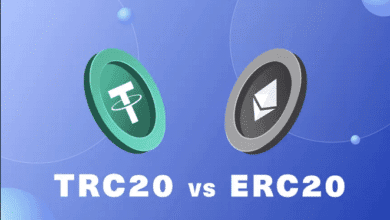What is Blockchain?

Blockchain technology has taken the world by storm, particularly with its association with cryptocurrencies. However, what is blockchain exactly, and how does it operate? In-depth explanations of blockchain’s definition, operation, and possible uses outside of cryptocurrencies are provided in this article.
What is Blockchain?
Imagine a digital record book shared across a vast network of sumosearch computers. This record book isn’t controlled by a single entity but is rather maintained collaboratively. Every entry in this book, once made, cannot be erased or altered. This shared, secure, and tamper-proof record book is essentially what a blockchain is.
Here’s a breakdown of its key features:
Distributed Ledger: Unlike traditional databases controlled by a central authority, a blockchain is distributed across a network of computers. Each computer on the network holds a copy of the entire ledger, ensuring transparency and security.
Immutable Records: Once a transaction is recorded on a blockchain, it cannot be changed or deleted. This immutability fosters trust and eliminates the need for a central authority to verify transactions.
Cryptographic Security: Blockchain utilizes cryptography, a complex mathematical scheme, to secure transactions and ensure the authenticity of each record.
How does blockchain work?
Now that we understand what a blockchain is, let’s explore how it functions:
Initiating a Transaction: A transaction is initiated within the network, such as a transfer of cryptocurrency or ownership of an asset.
Verification Process: The transaction details are broadcasted to the network participants, who then verify their legitimacy using pre-defined rules.
Block Creation: Once verified, the transaction is bundled with other validated transactions into a block.
Adding the Block to the Chain: Using cryptography, the new block is linked to the previous block on the chain, creating a chronological record. This process is called chaining.
Network Update: The updated blockchain is then distributed across the entire network, ensuring all participants have the same tamper-proof record.
Beyond Cryptocurrency: Unveiling the Potential of Blockchain
Blockchain is commonly associated with cryptocurrencies, but its uses go far beyond that. These are a few fascinating options:
Supply Chain Management: Blockchain can track the movement of goods throughout a supply chain, ensuring transparency and eliminating counterfeit products.
Secure Voting Systems: Blockchain’s immutability can revolutionize voting by creating secure and verifiable elections with reduced fraud risks.
Identity Management: Block chains can empower individuals with secure and self-sovereign control over their personal data.
Intellectual Property Protection: The technology can streamline intellectual property rights management, safeguard ownership, and prevent unauthorized use.
Block chain technology is still evolving, but its potential to transform various sectors is undeniable. As we move forward, expect to see even more innovative applications emerge, shaping a future built on trust, security, and transparency. Also read: What is crypto?





